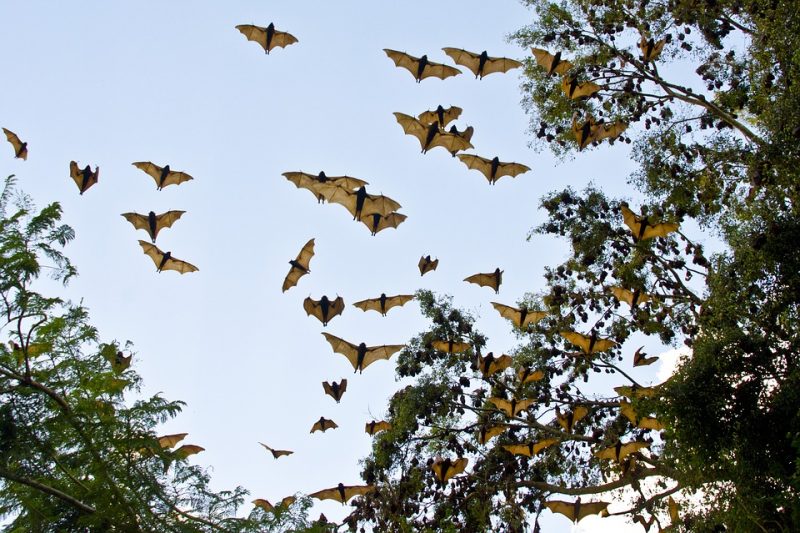
Human-generated, or anthropogenic, noise has gained a lot of research attention lately. It tracks human expansion and spreads throughout both terrestrial and aquatic habitats, leaving potential ecological catastrophes in its wake. Noise affects many aspects of animal life from fish foraging behavior to nesting success in birds. However, our understanding of how some animals may be able to cope with noise is limited.
Chorusing frogs and synchronized crickets, for example, have evolved in areas of very loud aggregations. On the other end of the spectrum, some animals have evolved in naturally quiet environments. During the winter, aptly-named snowy owls often hunt in snowy forests, which are often very quiet. So, we would expect chorusing frogs, rather than snowy owls, to have evolved some sort of adaptations for coping with loud noise.
Some frogs live in incredibly loud areas near crashing waterfalls or raging rivers. How can they hear potential mates near such a raucous soundscape? They seem to have evolved a few responses to deal with this incessant source of noise. Foot-flagging frogs, for example, wave their feet to present mates with a visual signal that is not affected by the loud environmental noise. Torrent frogs, on the other hand, have evolved an ability to communicate in ultrasonic frequencies — within frequencies that humans cannot hear. Singing at such high frequencies likely helps them avoid having their song masked, or covered up, by lower-frequency river noise.
To understand how this might work, imagine being near some high pitch (frequency) piece of equipment. Yes, it will be annoying, but it likely won’t affect your ability to hear your co-worker talking to you. Now imagine that same conversation in a dive bar. Humans all speak in a tight range of frequencies, and these frequencies all overlap with one another. When noise overlaps in time and frequency, we can say that it masks a sound of interest (your conversation in this case). But even humans have some tactics for dealing with noise: we tend to observe the lips of someone speaking in a loud bar. By using multiple sensory modalities, we gain additional information about what they might be saying.
It turns out that frog-eating bats do this too. The neotropical túngara frogs have a distinct call that bats can hear and recognize when foraging in the forest. But bats also echolocate, which helps them pinpoint where this chorusing frog is located. The frogs use an enlarged vocal sac to recycle air when calling, and the movement of this vocal sac is actually a cue that the bats use to find their prey via echolocation. So how does noise affect these predator-prey dynamics?
In an outdoor flight cage, scientists from the Smithsonian Tropical Research Institute allowed frog-eating bats to attack realistic frog robots in noisy situations. The robotic frogs closely resemble the túngara frog and even have a moving vocal sac that inflates and deflates with the call production. Thus, the bats could use the frog call and the moving vocal sac as cues to find the frog model.
There were three noise treatments that the bats had to forage in. In the first treatment, no noise was played back in the flight cage – this “ambient” noise was a control treatment. The second two were both noise playbacks of the same sound intensity (amplitude) but differed in frequency. One noise treatment was overlapping in noise frequency with the frog calls, while the other noise treatment did not overlap in frog call frequency. Similar to the human example, we would expect bats to have a harder time hearing frogs in noise that overlaps with the frog call frequency than in noise that does not overlap with such frequencies.
What this work showed is that, as predicted, bats took much longer finding frogs in noise that overlapped with the frog calls, but no such differences were found in noise that did not overlap with frog calls. However, the bats were still able to find the frogs in overlapping noise. They did this by relying more heavily on echolocation. Echolocation is much a higher-frequency sound that doesn’t overlap with either of the two noise treatments. So when bats couldn’t hear the frog calls, they simply switched to using echolocation more to find the moving vocal sacs of the frogs. This took them longer, but they were just as successful.
While these bats seem to be able to get around noisy situations, this is not the case for other bat species in Europe and North America, which are strongly affected by anthropogenic noise. This has important implications for understanding the effects of anthropogenic noise on animal communities. If animals are differentially affected by noise – depending on frequency – we may be seriously altering these natural systems by filtering out species that cannot cope with our sensory pollution.
These findings are described in the article entitled Bats perceptually weight prey cues across sensory systems when hunting in noise, recently published in the journal Science. This work was led by Dylan G. E. Gomes, currently at Boise State University.









